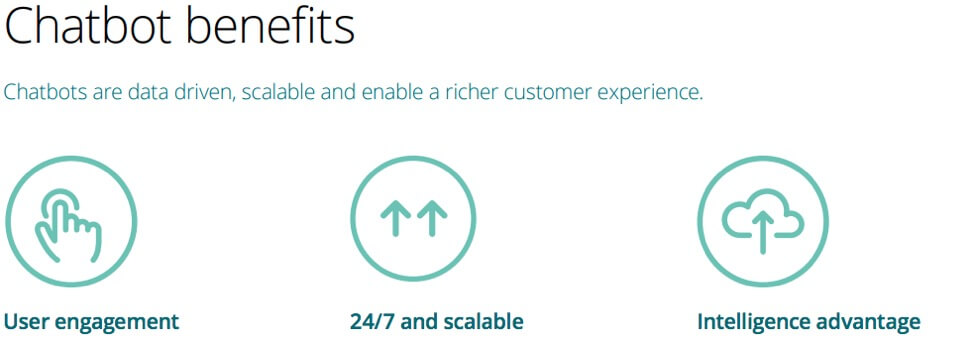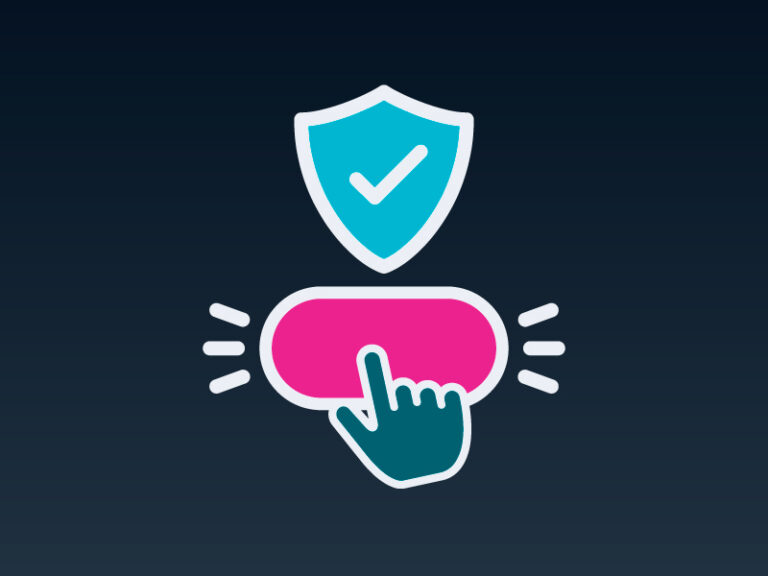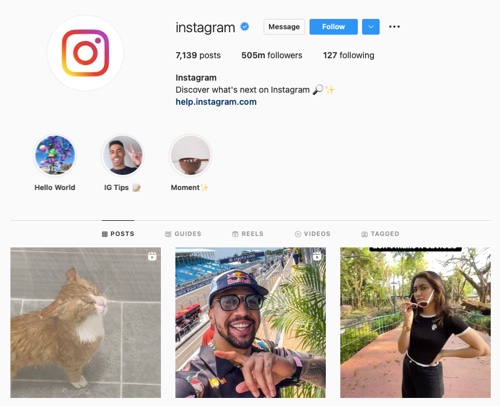Live chat enables businesses to service customers in real-time. They can also use proactive marketing to reach out to them at various points on their journey.
You can use AI-enabled chatbots to drive 24/7 support across several messaging applications. You can also track customer behavior to share personalized offers for higher conversions. Here are some stats to get you thinking:
Are you offering the channels your customers use on a regular basis? Or, are you only following the trends?
Live chat offers a convenient form of customer service that impacts your bottom line in a notable manner. According to stats, 63% of visitors are likely to revisit a site that offers live chat. A large number of customers are hesitant to buy if there’s no live chat option available.
The Rise of the Omnichannel Customer
Both multichannel and omnichannel strategies involve engaging customers across several channels. But, the difference lies in how the customer experience is a part of these channels.
To achieve this, businesses must integrate text, social, web, email, and instant messaging. The outcome will be customers being able to switch between different channels while experiencing the same service. Advanced software, such as live chat and AI-enabled bots make it easier to provide consistent service across avenues. The result of this is legitimate omnichannel presence.
Did you know that “44% of online consumers say that having questions answered by a live person while in the middle of an online purchase is one of the most important features a web site can offer”?
Multichannel vs. Omnichannel
Today’s digital-savvy customer demands round-the-clock service on every device. This makes it pertinent for brands to be omnipresent.
A multi-channel approach has led to the adoption of many communication platforms. But different teams in an organization manage most of these channels. This leads to an artificial divide which today’s hyper-connected customers cannot perceive. This leads to acute gaps between customer expectations and reality.
- 64% expect real-time help on each customer service channel they use.
- 61% of customers don’t find it easy to switch from one channel to another.
- 89% get frustrated by repeating their issues to several representatives
No wonder, businesses are adopting a multi-channel approach to keep their customers engaged. But, in their quest to focus on multi-channel, brands have overlooked the omnichannel approach. Thus, they aren’t able to provide unified experience to customers across several channels.
Unsurprisingly, businesses have much to grapple with. Besides personalizing their communications to a high degree, they must also strive to engage their customers on their preferred platforms. Not doing so will cause brands to risk their displeasure.
The above findings only make it evident that businesses have failed at providing a unified experience to their customers. The reason is simple.
Customer Experience Best Practices for an Omnichannel Strategy
Aberdeen Group reports that 85% of CX leaders conduct regular customer care training for better handling of omnichannel communications. The same report also found that 77% store customer contact data across several channels.
For example, you can deliver personalized offers and schemes to customers as they pass by your store using their geolocation data. IoT-enabled products can report their status to customer care in an automated manner. In turn, the customer support team can inform the client of any probable issues or upcoming maintenance schedule.
- Meet your customers where they are, i.e., on their preferred communication channel.
- Acknowledge each customer based on their past interactions with your brand. You must do this regardless of the channel they use.
- Break the silos. Operate as a single brand across channels to deliver a consistent omnichannel experience.
- Offer the same level of personalization regardless of the channel. This will make your customers feel valued.
3 Concrete Steps towards an Omnichannel Experience:
With natural language processing algorithms, they can tag customer queries as per pre-set keywords. With this, they can lead a customer to the next logical step.
According to a HubSpot research report, 71% of people use chatbots to solve their problems fast. Another research indicates that most of the customers prefer to interact with support via messaging apps. 53% are more likely to shop with businesses they can message.
Integrate Live Chat for an Omnichannel Customer Experience
For example, a company may offer both chat and phone support. But, does it also give you the convenience of switching between the two when you like? Or do you have to repeat your issue several times whenever your communication channel changes? Did you know that:
In case you are worrying about the mechanical nature of the conversations, lay your fears to rest. AI-enabled chatbots are gradually getting better at contextual discussions.
It comes as no wonder then for live chat to have the highest satisfaction levels for any customer service channel at 73%. This is much higher as compared with 61% for email and 44% for phone. Live chat also boosts your conversion rate. It enables your agents to interact with clients on their preferred channels. This helps them lead your customers to products or services that match their needs.
About 15 years ago, this number was only two. Google Research substantiates the multi-channel approach adopted by modern consumers. It reveals that 98% of Americans switch between devices on the same day.

So, if you wish to be a CX leader, you need to prepare your agents in omnichannel communications. You must also break down the silos that exist in data storage and reporting. Listening to the ‘Voice of the Customers’ to close the gaps between customer expectations and your CX is also pertinent. A cross-channel VoC program can help you mine the feedback you need to drive actionable insights for improving customer experience.
Here are some stats to get you thinking:
They use as many as six different touchpoints before purchasing a product. Your customers also expect the same experience on each touchpoint you offer. Forcing your customers to stick to a single channel leads to friction. Having them start at the beginning when switching channels also leads to poor CX.
Today, consumers use an average of six different touch points while buying an item.
AI-Enabled Chatbots for 24/7 Omnichannel Support
Live chat is a boon for brands who wish to improve their CX. It also helps to deliver a unified omnichannel experience to customers by facilitating a smooth switch between channels with its timely and human delivery.
Internet of Things refers to a technology that connects various devices to form a wireless network. This network enables communication using sophisticated sensors. When it comes to customer engagement, IoT holds tremendous power. So much so that it can help you create coherent CX strategies across several channels.

This could include the relevant product or service, FAQs, or connecting them with a live agent. This streamlines your workflow, as these bots only pass down complicated queries to your human resources. It also gives your agents a unified view of customer data through integrated reporting.
But, when you focus on omnichannel, you join all these touchpoints together. This helps your customers have a consistent and unified experience regardless of the journey they take.
Today’s customers don’t see a brand in silos.
To execute an omnichannel CX strategy without a hitch, you should know how your customers like being served. Get the right mix of channels by reviewing the performance per channel. You can compare customer traffic, the number of queries, and the cases closed per hour. This will help you gauge the effectiveness of individual channels. Here are four elements of an omnichannel customer experience strategy by Accenture:
According to research, “companies with the strongest omnichannel customer engagement strategies retain an average of 89% of their customers, as compared to 33% for companies with weak omnichannel strategies.” Yet, Zendesk reports that 87% of customers think brands must do more for providing seamless experience.
Create Omnichannel Experiences with IoT
Multichannel is all about offering service across multiple touchpoints in a competent and complete way. Omnichannel on the other hand strongly focuses on experience unification and standardization on the many channels a brand owns!
In other words, a successful omnichannel strategy requires trained customer support agents and a unified view of the customer journey!
The Next Steps
It also kills the hold time.
Live chat reduces customer frustration by allowing them to find help in a quick and convenient way.
While live chat is the grease in the wheels of helping users who leverage multiple touchpoints move from one channel to another without resistance… AI enabled chatbots can build on the ease by brining in the “delight”.






